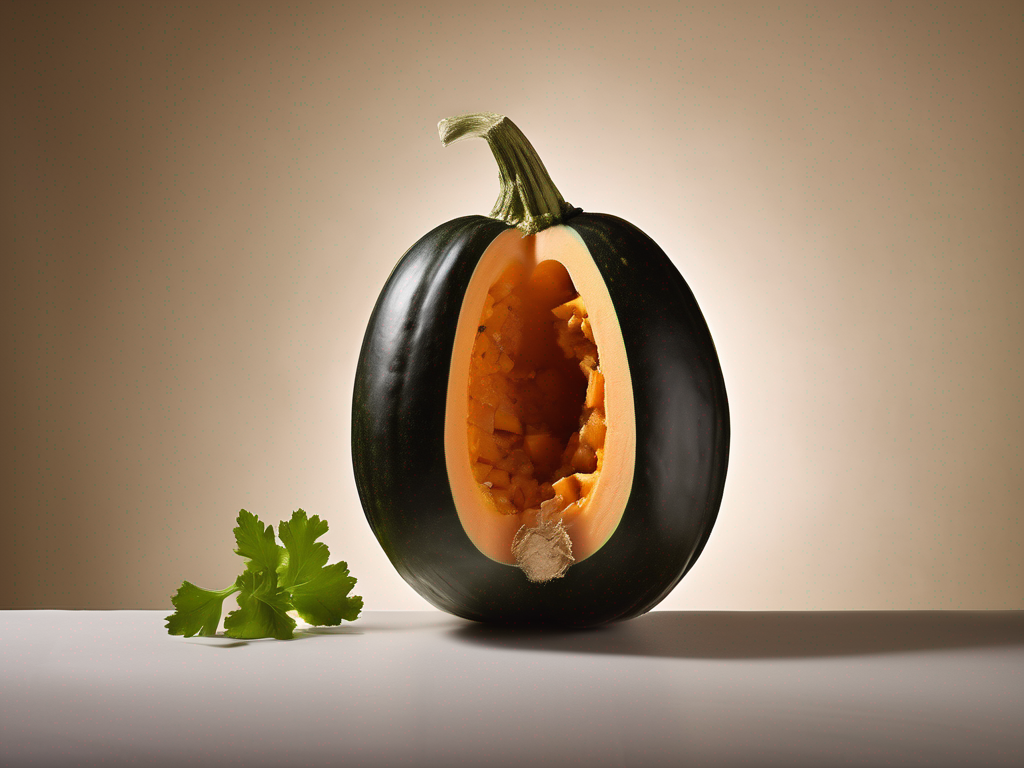
The Best Ways to Preserve Cucurbita for Long-Term Storage
Get Your Free Food Safety Cheat Sheet
30 most common foods with instant answers. Print it and stick it on your fridge—completely free!
The Best Ways to Preserve Cucurbita for Long-Term Storage
Cucurbita, commonly known as squash or pumpkin, is a versatile and nutritious vegetable that can be enjoyed in a variety of dishes. Whether you grow your own cucurbita or purchase it from the store or farmers' market, knowing how to properly preserve it for long-term storage is essential to prevent waste and enjoy its flavors year-round. In this blog post, we will explore the best methods to preserve cucurbita to ensure its freshness and quality over an extended period. (Cucurbita)
Understanding Cucurbita and Its Varieties
Cucurbita is a genus of plants in the gourd family, which includes various types of squash, pumpkins, and gourds. These vegetables come in different shapes, sizes, and colors, each offering a unique flavor profile and culinary potential. Some common varieties of cucurbita include:
- Butternut Squash
- Acorn Squash
- Spaghetti Squash
- Pumpkin
- Zucchini
Each variety of cucurbita has its own characteristics and ideal storage conditions, so it's important to consider these factors when choosing a preservation method.
Factors to Consider Before Preserving Cucurbita
Before diving into the various preservation techniques, here are some important factors to consider when storing cucurbita for long-term use:
- Variety: Different types of cucurbita have varying shelf lives and storage requirements.
- Ripeness: It's best to preserve cucurbita when it is fully ripe but not overripe.
- Condition: Only store cucurbita that is free from any blemishes, bruises, or signs of decay.
- Storage Space: Ensure you have adequate space and suitable conditions for long-term storage.
Best Ways to Preserve Cucurbita
Preserving cucurbita for long-term storage can help extend its shelf life and allow you to enjoy this nutritious vegetable throughout the year. Here are some effective methods to consider:
1. Canning
Canning is a popular preservation method that involves sealing cucurbita in jars and processing them in a water bath or pressure canner. Follow these steps for successful canning:
- Wash and cut the cucurbita into uniform pieces.
- Pack the pieces into sterilized jars, leaving appropriate headspace.
- Add a canning liquid (water, broth, or syrup) and any desired seasonings.
- Process the jars according to the recommended canning time and pressure for your specific type of cucurbita.
2. Freezing
Freezing is a convenient way to preserve cucurbita while retaining its texture and flavor. Here's how you can freeze cucurbita:
- Blanch the cucurbita by briefly immersing it in boiling water, then transferring it to an ice bath.
- Drain the blanched cucurbita and pack it in airtight containers or freezer bags.
- Label the containers with the date and type of cucurbita before placing them in the freezer.
3. Dehydrating
Dehydrating cucurbita removes moisture from the vegetable, extending its shelf life and preserving its nutrients. Follow these steps to dehydrate cucurbita:
- Slice the cucurbita into thin, even pieces.
- Arrange the slices on a dehydrator tray in a single layer.
- Dry the cucurbita at the recommended temperature until it is completely dehydrated.
- Store the dehydrated cucurbita in airtight containers in a cool, dark place.
4. Root Cellar Storage
If you have access to a root cellar or a cool, dark, and humid storage area, you can store whole cucurbita for an extended period. Follow these tips for successful root cellar storage:
- Choose mature, undamaged cucurbita with intact stems.
- Place the cucurbita in a single layer on shelves or racks in the root cellar.
- Check the cucurbita regularly for any signs of spoilage and remove any damaged ones immediately.
Safety Tips for Preserving Cucurbita
When preserving cucurbita for long-term storage, it's important to follow safety guidelines to prevent foodborne illnesses and ensure the quality of the preserved vegetables. Here are some safety tips to keep in mind:
- Use clean and sanitized equipment: Wash all utensils, jars, and containers thoroughly before use.
- Follow recommended processing times and temperatures: Proper processing is essential for safe preservation.
- Discard any cucurbita that shows signs of spoilage: Mold, off smells, or unusual textures are indicators of spoilage.
- Label and date all preserved cucurbita: This will help you keep track of storage times and rotation.
Conclusion
Preserving cucurbita for long-term storage allows you to enjoy the flavors and benefits of this versatile vegetable beyond its peak season. By understanding the different preservation methods and following safety guidelines, you can ensure that your stored cucurbita remains fresh and safe to consume. Whether you choose canning, freezing, dehydrating, or root cellar storage, proper preservation techniques will help you make the most of this nutritious vegetable throughout the year. So, stock up on cucurbita and start preserving for a delicious and sustainable food supply!
Authoritative Food Safety References
These agencies and university labs inform every tip and health precaution we publish.
USDA FoodKeeper – Cold Storage Guidelines
Official refrigerator, freezer, and pantry timelines maintained by the U.S. Department of Agriculture.
Visit USDA FoodKeeperFDA Produce Safety Rule & Grower Guidance
Field-to-fridge handling practices that prevent contamination of fruits, vegetables, and leafy greens.
Visit FDA Produce SafetyCDC Foodborne Illness Prevention Hub
Surveillance-backed guidance on pathogens, symptoms, and steps to reduce foodborne illness risk.
Visit CDC Food SafetyUC Davis Postharvest Technology Center
University research detailing optimal storage atmospheres for produce after harvest.
Visit UC Davis PostharvestPenn State Extension – Home Food Preservation & Safety
Peer-reviewed extension bulletins on safe canning, chilling, and reheating practices.
Visit Penn State ExtensionGet Your Free Food Safety Cheat Sheet
30 most common foods with instant answers. Print it and stick it on your fridge—completely free! Want more? Upgrade to the complete guide with 70+ foods.
Scan your food directly and get instant safety info using our AI-powered camera feature.